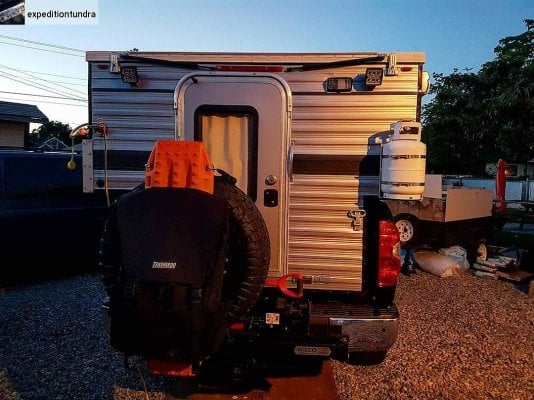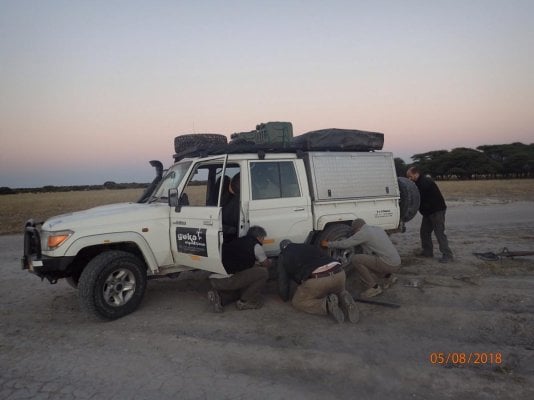Kicking around designs for a new rig and wondering about the membership's own preferences re where to store a standard size spare tire(s).
Infront of camper. We have a chassis cab with no provision for under frame placement and so chose infront . This has it's own merits but our version requires manual lifting of the 100# wheel and tire to deck height, something not practical for everyone.
Underneath. Next truck might be a pick up. It's been a while since I had one and I do like the idea of shorter truck length but may have forgotten the quirks of the spare being underneath. Around my area some company pick ups, run by logging, mining, ministry of conservation etc, carry a spare in the box, usually against a headache rack. These might be a second spare, but I suspect it is a convenience thing. Anyone know about this ?
Rear mount. No experience here but seems to me best suited for a side entry camper. Lots of swing out carriers around. Some I imagine are needed because of oversize tires but wonder about other considerations.
Ideal would be a location and system that is easy for both travelling adults to use.
Thoughts and experiences welcome.
~David
Infront of camper. We have a chassis cab with no provision for under frame placement and so chose infront . This has it's own merits but our version requires manual lifting of the 100# wheel and tire to deck height, something not practical for everyone.
Underneath. Next truck might be a pick up. It's been a while since I had one and I do like the idea of shorter truck length but may have forgotten the quirks of the spare being underneath. Around my area some company pick ups, run by logging, mining, ministry of conservation etc, carry a spare in the box, usually against a headache rack. These might be a second spare, but I suspect it is a convenience thing. Anyone know about this ?
Rear mount. No experience here but seems to me best suited for a side entry camper. Lots of swing out carriers around. Some I imagine are needed because of oversize tires but wonder about other considerations.
Ideal would be a location and system that is easy for both travelling adults to use.
Thoughts and experiences welcome.
~David


